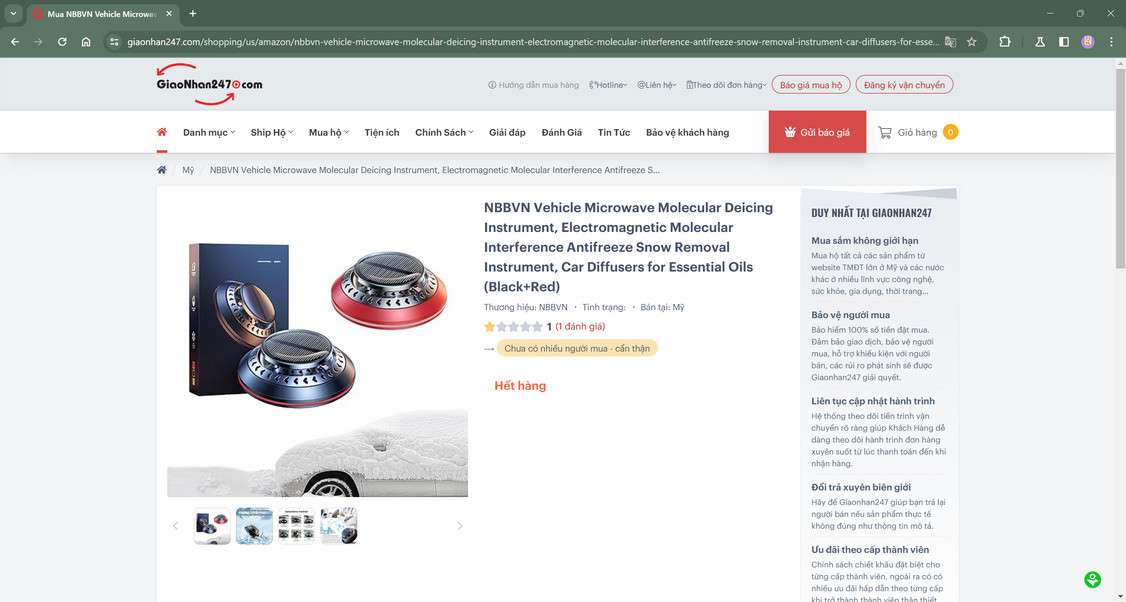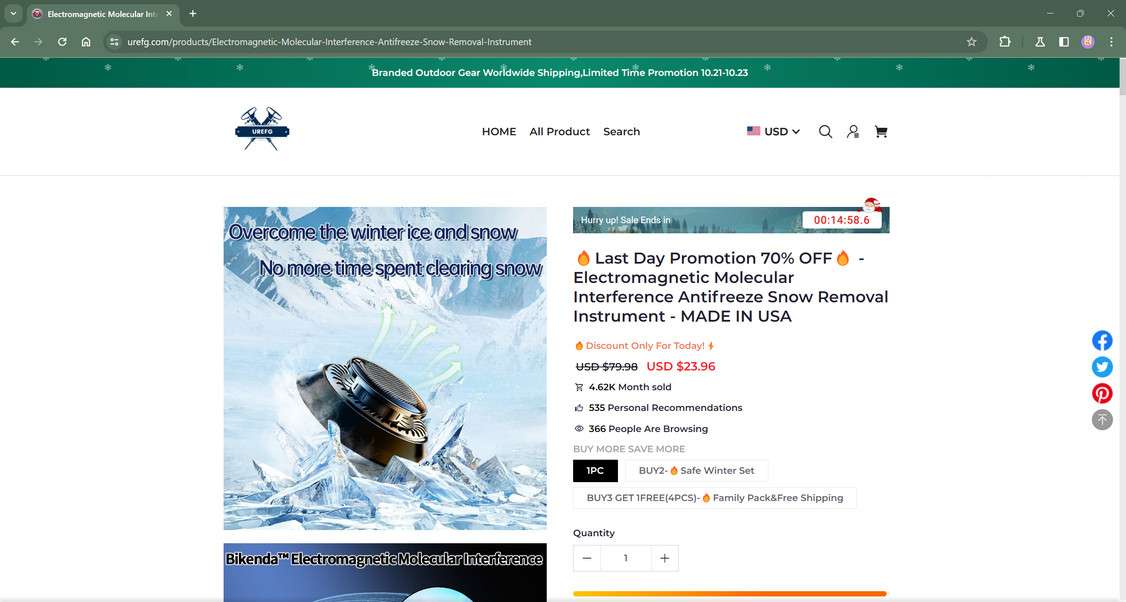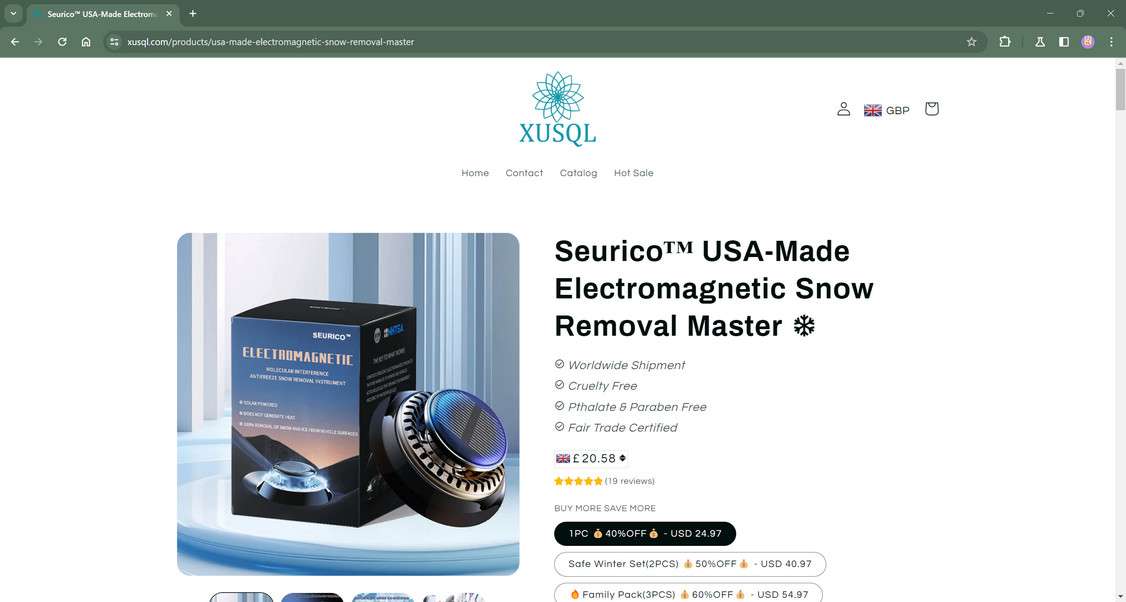As winter weather arrives, a deceptive scam has emerged aggressively targeting vulnerable vehicle owners with claims of revolutionary snow melting technology. Slick advertisements promote a device called the GlaciClear Electromagnetic Molecular Interference Antifreeze Snow Removal Instrument that supposedly uses advanced frequencies to instantly eliminate snow and ice. However, investigation reveals this heavily marketed product is merely a cheap $1 air freshener fraudulently sold for over $100 each. Read on to uncover how this bait-and-switch scam works and how to avoid getting ripped off.
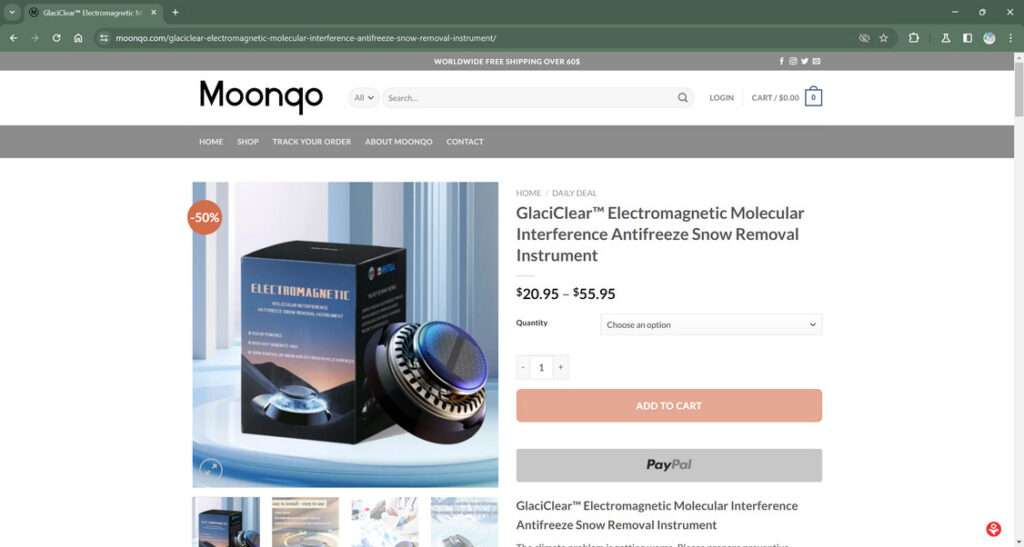
Overview of the GlaciClear Snow Remover Scam
A widespread scam circulating online features aggressive ads across social media promoting a supposed advanced snow removal technology called the GlaciClear Electromagnetic Molecular Interference Antifreeze Snow Removal Instrument.
These ads claim this small plastic device leverages customized electromagnetic frequencies to molecularly melt frozen precipitation instantly upon contact with vehicles.
Ads Boast Futuristic Tech That Melts Snow Instantly
The polished promotions assert GlaciClear uses specialized EM frequencies based on aerospace engineering to essentially “boil away” frozen water molecules the moment they touch a vehicle’s surface.
As the compelling ads proclaim, just attach GlaciClear and watch snow and ice literally slide right off your car untouched “as if repelled by a forcefield!”
Device is Actually a Cheap $1 Air Freshener
However, investigation by consumer advocacy groups reveals the heavily marketed GlaciClear device is outright fraud.
In reality, the product itself is simply a generic dollar-store air freshener purchased in bulk from Chinese ecommerce sites like Alibaba for mere pennies.
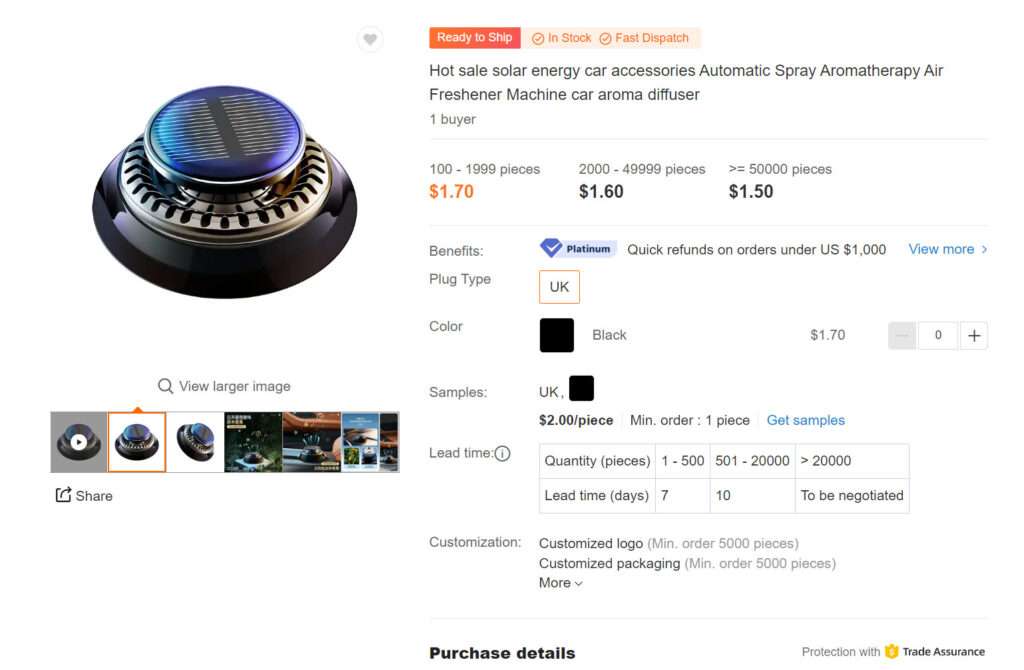
Scammers Repackage Fresheners as High-Tech Devices
The scammers behind GlaciClear take these cheap car fresheners costing a dollar or less and creatively disguise them in professional GlaciClear packaging and branding.
This makes the near-worthless air fresheners appear to be futuristic nanotech instruments to unsuspecting customers.
Customers Get Duped Into Paying Wildly Inflated Prices
Deceived consumers purchase these rebranded dollar-store air fresheners at outrageously inflated prices around $39 – $99 each.
The slick marketing successfully dupes them into believing they acquired an advanced electromagnetic snow remover.
Scammers Pocket Huge Profits From This Bait-and-Switch Tactic
This deliberate bait-and-switch deceit allows the GlaciClear scammers to reap massive profits off exploited victims by leveraging exaggeration and false scarcity.
In summary, beware of this deceptive winter driving scam making absurd claims about cheap air fresheners to swindle desperate drivers. Let critical thinking overcome hype.
How the GlaciClear Snow Remover Scam Operates
The GlaciClear scam utilizes an intricate process to deceive consumers motivated by the promise of effortless snow removal. Here is how it works:
1. Create Slick Websites and Social Media Ads
First, scammers design polished website and social media ads promoting the GlaciClear device. These contain persuasion tactics and unrealistic claims like “emits targeted frequencies that destroy snow down to the molecular level.”
2. Make Exaggerated Claims
The ads assert GlaciClear uses customized electromagnetic frequencies based on aerospace tech to instantly eliminate frozen precipitation from vehicles. These wild claims target desperate drivers.
3. Purchase Generic $1 Air Fresheners
Meanwhile, the scammers purchase cheap generic car air fresheners in bulk orders from Chinese ecommerce sites for mere pennies per unit.
4. Disguise Fresheners as High-Tech Devices
They creatively package the nearly worthless fresheners in professional GlaciClear-branded boxes to disguise them as futuristic snow-melting instruments.
5. Pressure Customers With Manipulative Tactics
Their websites create false urgency with countdown timers, limited supply warnings, and other manipulative tactics aimed to prevent scrutiny and drive impulse sales.
6. Sell Repackaged Fresheners at Severely Inflated Prices
Deceived customers purchase the $1 fresheners at outrageously inflated prices around $39 – $99 each, believing they acquired an advanced snow removal technology.
7. Ignore Refund Requests
Angry customers who eventually realize it’s a useless plastic trinket find their refund requests ignored by the scammers to prevent reversing the fraudulent charges.
8. Constantly Shift to New Sites
As soon as a website gathers too many negative reviews and complaints, the scammers shift to a brand new site and repeat the process.
This systematic deception enables them to keep profiting from consumers desperate for effortless snow removal solutions.
Warning Signs to Recognize the GlaciClear Snow Remover Scam
Several clear red flags can help consumers avoid getting deceived by this bait-and-switch:
- No Credible Proof – Nowhere do the ads provide convincing evidence these plastic air fresheners leverage specialized frequencies that can melt snow as claimed.
- Identical to Cheap Trinkets – The advertised device itself is flimsy plastic and an exact match for $1 air fresheners on Chinese websites.
- Refusal of Refunds – Sites strictly prohibit returns to prevent customers from realizing the useless product.
- Shifting Domain Names – Frequent domain changes indicate operators are abandoning exposed websites.
- No Physical Address – Lack of a verifiable physical location prevents holding scammers accountable.
- No Negative Reviews – 100% flawless ratings suggests censorship of critical reviews.
- High-Pressure Tactics – Countdown timers, limited supply claims, and refusing returns are typical pressure tactics.
With awareness of these red flags, consumers can better identify unacceptable risk and deception before making a costly purchase mistake.
Identifying This Scam on Facebook
Facebook’s vast reach makes it a prime platform to perpetuate the GlaciClear scam. Here are tips to detect their deceptive Facebook tactics:
- Sponsored Ads – Be suspicious of ads promoting unbelievable claims about instant snow melting. For example: “New futuristic device melts snow instantly using EM frequencies!”
- Clickbait – Posts with headlines like “I couldn’t believe my eyes when I saw how easily this removed snow from my car” encourage clicking without thinking critically.
- Sensational Images – Dramatic before-and-after photos showing snow magically disappeared are often fake or doctored.
- Fake Reviews – Glowing reviews on Facebook pages with vague praise like “It worked amazingly!” may be completely fabricated.
- Comment Censoring – Critical or doubtful comments get deleted right away, while positive remarks remain.
- Hard Selling – Aggressive purchase urges, limited supply claims, and pressuring language are transparent manipulation tactics.
Stay alert to these red flags when browsing Facebook. Demand legitimate proof over sensational claims.
Spotting This Scam on Instagram
Watch for these common tactics on Instagram promoting the GlaciClear device:
- Influencer Marketing – Paid influencer posts tout the product as a winter must-have but provide no credible testing.
- Aspirational Images – Glossy lifestyle photos depict the device as the solution to winter frustrations and social acceptance.
- Excessive Hype – Captions contain exaggerated claims of “watching snow vanish instantly” without displaying real evidence.
- One-Sided Comments – Critical questioning comments never get approved or answered.
- Follower Irregularities – Unusually high follower counts with low engagement can signal purchased fake bot followers.
- Sales Links – Links to purchase prominently featured but no links provided to legitimate product reviews.
Think twice before believing emotional imagery over substance. Demand actual proof.
Recognizing This Scam on TikTok
Here are signs of the GlaciClear snow remover scam on TikTok:
- Viral Hype Videos – Slick videos praise the product but lack any real demonstrations or testing.
- No Critical Comments – Questions and skeptical remarks get deleted, creating illusion everyone agrees it works.
- Fake Authority Claims – Videos reference nonexistent professional studies or fake expert endorsements as proof.
- Deceptive Captions – Exaggerated captions make bold claims without evidence like “Snow doesn’t stand a chance against this futuristic tech!”
- Affiliate Links – The profile links to outside sales pages with financial incentives to drive purchases over honest reviews.
- Bot Followers – High follower counts with low engagement levels often expose fake bot followers.
Think critically rather than get swept up in viral hype. Scrutinize claims and ensure real proof exists before trusting a product.
What To Do If You Already Purchased an GlaciClear Device
If you unfortunately fell victim already and bought one of these overpriced air fresheners masquerading as advanced snow tech, immediately take these steps:
1. Dispute the Charges
Contact your credit card company or payment provider to dispute the charge as fraudulent and request a chargeback refund. Act promptly before dispute rights expire.
2. Demand a Refund
Reach out to the scam merchant directly to demand an immediate and complete refund. Be persistent if they initially refuse or ignore requests.
3. Leave Online Reviews
Post detailed negative reviews about your experience to warn others. File complaints with the BBB, FTC, and consumer protection organizations.
4. Spread Awareness
Leverage social media to expose the deception. Contact platforms used like Facebook to report the scam ads. Reduce their reach.
5. Monitor Your Credit
Check your credit reports and statements to detect any signs of identity theft associated with the purchase. Consider a credit freeze if concerned.
6. Report Scam Websites
Submit the fraudulent website URLs to Google Safe Browsing, domain registrars, and cybercrime units to potentially get them taken down.
Though recouping losses requires tenacity, victims can take back control through proactive actions to stop ongoing harm and prevent future deception.
Frequently Asked Questions About the GlaciClear Snow Remover Scam
Given the questionable claims surrounding the GlaciClear Electromagnetic Snow Removal device, many prudent consumers have pressing questions. Here are answers to some of the most common FAQs.
What exactly is the GlaciClear snow remover scam?
This scam deceitfully markets cheap $1 air fresheners purchased in bulk as high-tech instruments that leverage “custom EM frequencies” to instantly eliminate frozen precipitation from vehicles.
How does it allegedly work?
The deceptive ads and sites assert the GlaciClear device emits targeted electromagnetic frequencies that molecularly “melt snow on contact” by disrupting solid frozen water molecules. This is patently false.
What proof exists that it works as promoted?
Absolutely none. There are zero credible studies, prototypes, or real-world testing data validating the device can actually emit any specialized signals or frequencies to instantaneously remove snow and ice.
What are some telltale warning signs of this scam?
Obvious red flags include exaggerated pseudoscientific claims, pressure sales tactics, lack of address details, refusal to provide real proof, fake reviews and images, and constantly shifting domains whenever exposed.
Can this plastic device really clear snow magically?
No. The product is nothing more than a cheap dollar-store air freshener. It possesses no actual capabilities to emit targeted frequencies or molecularly dissolve frozen water as deceptively claimed. It’s merely a decorative plastic trinket.
What should I do if I already ordered one?
Immediately contact your credit card issuer to dispute the charge as fraudulent. Report the deception to the FTC, BBB, and consumer protection agencies. Post warnings online detailing the scam to prevent other victims.
How can I avoid these scams in the future?
Apply critical thinking to claims that seem too good to be true. Research sellers thoroughly before purchasing. Watch for pressure tactics and emotional appeals. Demand transparent proof for remarkable claims. Make purchases based on facts over hype.
Carefully scrutinize purported breakthrough ads to avoid getting duped. Seek out impartial customer reviews and scientific evidence to make informed decisions and protect yourself from “miracle” product scams.
The Bottom Line on the GlaciClear Snow Remover Scam
In summary, exercise extreme caution regarding purported electromagnetic snow removal devices like GlaciClear. Outrageous claims these cheap plastic air fresheners leverage customized frequencies to instantly eliminate frozen precipitation are false.
No scientific proofs exist. The only evidence indicates a deliberate bait-and-switch scam repackaging nearly worthless $1 trinkets to deceive and exploit consumers.
Approach promises of effortless snow removal through futuristic tech with healthy skepticism. Let logic outweigh emotional appeals. Avoid limited time offers pressuring quick purchases without proper vetting.
In reality, no substitute exists for manual snow removal labor. These scams capitalize on desperation for an easier solution. Protect yourself through vigilance and making informed decisions. Don’t enable predatory winter driving scams to profit at your expense.

